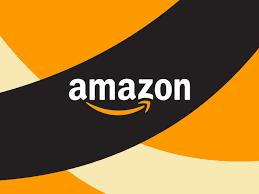Leveraging external traffic sources and social media can significantly enhance the success of your product launch on Amazon FBA. Here are some strategies to consider:
- Social Media Marketing: Create a strong presence on social media platforms that align with your target audience. Develop engaging content related to your product, such as product teasers, behind-the-scenes footage, tutorials, or customer testimonials. Encourage followers to visit your Amazon product listing or website. Utilize social media advertising to reach a wider audience and drive traffic to your product.
- Influencer Partnerships: Collaborate with influencers or bloggers who have a relevant following and engage with your target market. Provide them with free samples or exclusive offers to review and promote your product to their audience. Influencers can create engaging content, such as unboxing videos, product demonstrations, or reviews, that can drive traffic and generate interest in your product.
- Content Marketing: Develop valuable content related to your product and industry. Create blog posts, videos, podcasts, or infographics that educate, entertain, or inspire your target audience. Optimize your content for search engines to attract organic traffic. Include links to your Amazon product listing within the content to drive visitors directly to your product.
- Email Marketing: Leverage your email list by sending targeted campaigns to subscribers, announcing your product launch, and providing exclusive offers or discounts. Craft compelling email content that highlights the benefits and features of your product. Include clear calls-to-action that direct recipients to your Amazon product listing.
- Paid Advertising: Consider utilizing paid advertising channels, such as Google Ads or Facebook Ads, to drive external traffic to your Amazon product listing. Set up targeted campaigns based on relevant keywords, demographics, or interests to reach potential customers. Direct the traffic to a dedicated landing page or directly to your Amazon product listing using custom URLs or tracking codes.
- Landing Pages and Microsites: Create dedicated landing pages or microsites that provide detailed information about your product and include a direct link to your Amazon product listing. These pages can be optimized for search engines and used in conjunction with your external traffic sources. Include compelling visuals, persuasive copy, and strong calls-to-action to drive visitors to make a purchase.
- Giveaways and Contests: Organize promotional giveaways or contests on social media platforms to generate buzz and attract new customers. Encourage participants to share your product launch announcement, tag friends, or engage with your content for a chance to win your product. This can increase brand visibility, engagement, and drive traffic to your Amazon listing.
- Affiliate Marketing: Establish an affiliate program and recruit affiliates who can promote your product through their websites, blogs, or social media channels. Offer them a commission for each referred sale. Provide affiliates with promotional materials, unique tracking links, and exclusive offers to incentivize their promotion efforts.
- PR and Media Outreach: Reach out to relevant media outlets, bloggers, or industry influencers to pitch your product and secure media coverage. Offer them exclusive access to your product, press releases, or interesting angles for potential stories. Positive media coverage can generate external traffic and enhance your brand’s credibility.
- Customer Referral Program: Implement a customer referral program that rewards existing customers for referring new customers. Provide incentives, such as discounts, free products, or exclusive perks, to customers who refer others to your product. Encourage satisfied customers to share their experiences on social media and refer their friends and family.
- Webinars and Live Streams: Host webinars or live streams to showcase your product and engage with your audience in real-time. Demonstrate how your product solves a problem or addresses a need, and offer a special discount or promotion for webinar attendees. Encourage participants to leave reviews after their purchase.
- External Traffic Campaigns: Use paid advertising platforms such as Google Ads or Facebook Ads to drive external traffic to your Amazon product listing. Create targeted campaigns, optimizing keywords and audience targeting to reach potential customers who may be interested in your product. Monitor your campaign’s performance and adjust your strategy as needed.
- Facebook Groups and Communities: Join relevant Facebook groups and communities in your niche and engage with the members. Provide value by answering questions, sharing insights, and offering helpful advice. Avoid being overly promotional, but include links to your product listing when relevant or when members specifically request recommendations.
- YouTube Video Marketing: Create video content showcasing your product, its features, and how it benefits customers. Optimize your video titles, descriptions, and tags for relevant keywords, and include links to your Amazon page in the video description. Encourage viewers to leave reviews and share the video with their networks.
When using external traffic sources and social media for your product launch, ensure that your messaging is consistent across all channels and that your Amazon product listing is optimized to convert visitors into customers. Track the performance of each traffic source and adjust your strategies based on data and customer feedback. By effectively leveraging these external channels, you can drive targeted traffic to your Amazon product listing and increase the chances of a successful product launch on Amazon FBA.
SHARE
